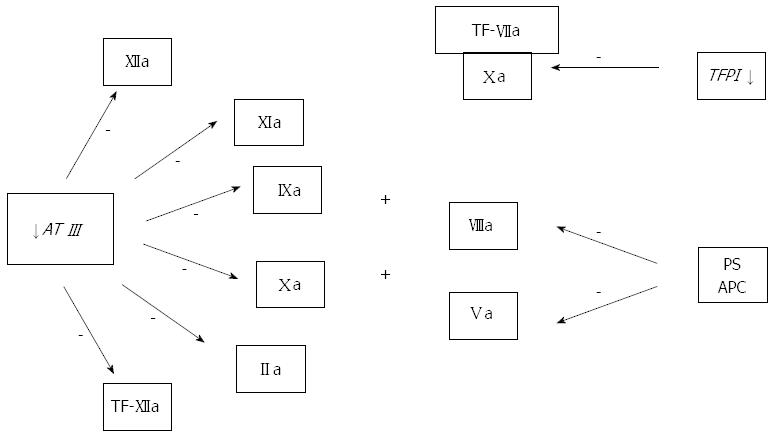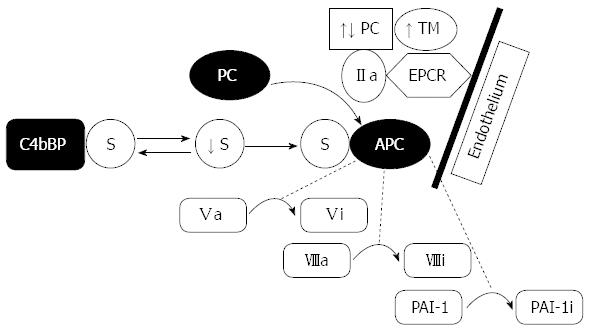Copyright
©2013 Baishideng Publishing Group Co.
World J Gastroenterol. Jan 7, 2014; 20(1): 53-63
Published online Jan 7, 2014. doi: 10.3748/wjg.v20.i1.53
Published online Jan 7, 2014. doi: 10.3748/wjg.v20.i1.53
Figure 1 Coagulation cascade model.
↑/↓: Changes in coagulation factors, in patients with inflammatory bowel diseases.
Figure 2 The elements of the fibrinolytic system.
tPA: Tissue-type plasminogen activator; uPA: Urokinase plasminogen activator; PAI-1: Plasminogen activator inhibitor type 1; TAFI: Thrombin activatable fibrinolysis inhibitor; FDP: Fibrin degradation products; FgDP: Fibrinogen degradation products. ↑/↓: Changes in coagulation factors, in patients with inflammatory bowel diseases.
Figure 3 Plasma coagulation inhibitors.
AT III: Antithrombin III; TF: Tissue factor; TFPI: TF pathway inhibitor; PS: Protein S; APC: Activated protein C. ↓: Changes in plasma coagulation inhibitors, in patients with inflammatory bowel diseases.
Figure 4 Protein C system.
PC: Protein C; APC: Activated protein C; S: Protein S; TM: Thrombomodulin; PAT-1: Plasminogen activator inhibitor 1; EPCR: Endothelial cell PC receptor; C4bBP: C4b-binding protein; Va: V active; Vi: V inactive; VIIIa: VIII active; VIIIi: VIII inactive. ↑/↓: Changes in protein C system, in patients with inflammatory bowel diseases.
- Citation: Owczarek D, Cibor D, Głowacki MK, Rodacki T, Mach T. Inflammatory bowel disease: Epidemiology, pathology and risk factors for hypercoagulability. World J Gastroenterol 2014; 20(1): 53-63
- URL: https://www.wjgnet.com/1007-9327/full/v20/i1/53.htm
- DOI: https://dx.doi.org/10.3748/wjg.v20.i1.53












